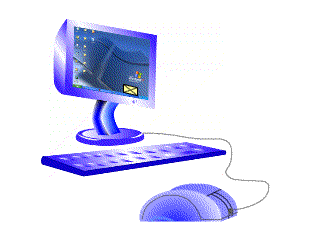
3rd Grade E-mail Tips
from Mrs. Vilella

A great way to keep in touch with your friends and family!
I know that you are all friendly letter experts, but did you know that E-mail is quicker? Instead of taking days to receive a letter, E-mail takes minutes. This is a great way to communicate, but there are some things that you need to be aware of. Check out the tips below so that you can be on your way to clear and quick E-mail communication.
1. Always ask for parent permission before sending an E-mail or accessing the Internet.
This is important so that your parents know who you are communicating with and what information you are checking out on the Internet. I know that you may think this is a pain, but it is really for the best. Your parents and I want to keep you safe!
2. Make sure you have the correct E-mail address.
Just like a friendly letter, if you don't have the correct address it won't get there! Spelling is important! If you put in the wrong address your E-mail could get sent back to you or go to the wrong person. Double check your spelling and punctuation to prevent this from happening.
3. Give useful subject lines.
Make sure that the subject of your E-mail is short and relates to what your E-mail is about.
Example
Subject: Game to party.
This subject would be perfect if you were E-mailing a friend and asking him or her to bring one of your favorite games to a party you are having on Saturday.
Subjects give the person you are sending the E-mail to a clue to what your E-mail is about. If you just wrote "Hello" as a subject your friend may think that you just wrote to say hello and they may not read your E-mail before coming to your party therefore they would not bring the game you were asking them to bring.
4. Do not use fancy text or fonts.
Some computers and programs do not recognize strange kinds of fonts. If you start to make crazy changes to the text their computers may not recognize what you are writing. Your E-mail could end up a series of numbers and symbols.
5. Keep it short.
Computer screens are a lot different than a sheet of paper. They are much harder on your eyes. Make your paragraphs and sentences short so that your friends will have an easier time reading your message.
6. Do not use all capital letters.
When you write in all capital letters this gives people the message that you are yelling or shouting at them. If you do want to yell and shout at them, I think it is best not to send an E-mail.
7. Use "Smileys" to let others know how you feel.
Since the person reading your E-mail cannot see your facial expressions or body language, try using "Smileys" to let them know how your are feeling.
Examples:
:-) Happy
;-) Happy/Funny/Wink
:-( Sad
8. Use your best grammar and spelling.
Just like a friendly letter, you need to proofread. You can also use grammar and spell check, but remember they sometimes do not catch all mistakes.
9. Use your best judgment when deciding on your greeting and closing.
If you are writing to a close friend or family member you could start with their first name or just "Hello". If you are writing to someone you do not know well you may want to address them by using "Dear" or "Mr./Ms.". The closing is the same way. You may want to use "Your Friend" or just write your name if you are close to them and use "Sincerely" if you are not.
10. Do not provide personal information or E-mail things that you do not want others to find out.
Remember that E-mails could be read by someone other than who you are sending it to. Be careful not to provide personal information such as your address, phone number, or something that you do not want others to find out. Just like any letter, it could get in the wrong hands.
I hope that these tips are helpful to you. If you follow this guide, you will have clearer and more meaningful communication through E-mail!